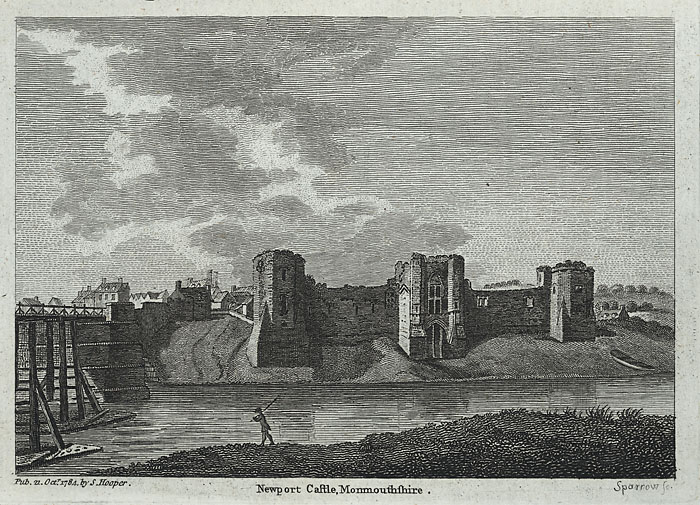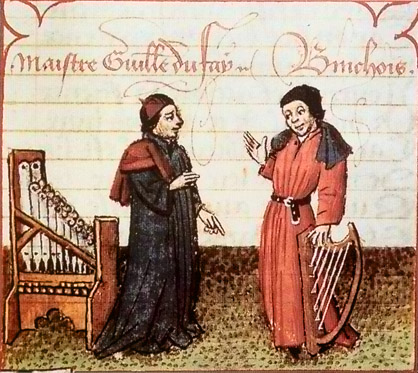|
Westgate Hotel, Newport
The Westgate Hotel, Commercial Street, Newport, Wales is a hotel building dating from the 19th century. On 4 November 1839 the hotel saw the major scenes of the Newport Rising, when 3,000 Chartists, some of them armed, led by John Frost marched on Newport to attempt to secure the release of five of their number who were being held under arrest at the hotel. In the fighting between about 60 soldiers of the 45th Regiment of Foot and police on one side, and a larger number of Chartists on the other, 10-22 Chartists were killed and more than 50 wounded. The hotel is a Grade II listed building. History After the demolition of Newport's original West city gate, the site was reclaimed and a hotel constructed in 1779 on the site of a previous 15th-century house. The Westgate Hotel was the location of the last large-scale armed rebellion against authority in Great Britain. On 4 November 1839, local politician and activist John Frost led a protest march of 3,000 Chartists, some of t ... [...More Info...] [...Related Items...] OR: [Wikipedia] [Google] [Baidu] |
Regency Architecture
Regency architecture encompasses classical buildings built in the United Kingdom during the Regency era in the early 19th century when George IV was Prince Regent, and also to earlier and later buildings following the same style. The period coincides with the Biedermeier style in the German-speaking lands, Federal style in the United States and the French Empire style. Regency style is also applied to interior design and decorative arts of the period, typified by elegant furniture and vertically striped wallpaper, and to styles of clothing; for men, as typified by the dandy Beau Brummell and for women the Empire silhouette. The style is strictly the late phase of Georgian architecture, and follows closely on from the neo-classical style of the preceding years, which continued to be produced throughout the period. The Georgian period takes its name from the four Kings George of the period 1714–1830, including King George IV. The British Regency strictly lasted only from 1 ... [...More Info...] [...Related Items...] OR: [Wikipedia] [Google] [Baidu] |
Heritage At Risk Register
An annual ''Heritage at Risk Register'' is published by Historic England. The survey is used by national and local government, a wide range of individuals and heritage groups to establish the extent of risk and to help assess priorities for action and funding decisions. This heritage-at-risk data is one of the UK government's official statistics. ''Heritage at risk'' is term for cultural heritage assets that are at risk as a result of neglect, decay, or inappropriate development; or are vulnerable to becoming so. England's ''Heritage at Risk Register'' The ''Heritage at Risk Register'' covers: * Grade I and II* listed buildings (the baseline register is 1999); Grade II listed buildings in London only (the baseline register is 1991) * Structural scheduled monuments (base year is 1999) and scheduled monuments (base year is 2009) * Registered parks and gardens (base year is 2009) * Registered historic battlefields (base year is 2008) * Protected wreck sites * Conservation areas ... [...More Info...] [...Related Items...] OR: [Wikipedia] [Google] [Baidu] |
Grade II Listed Buildings In Newport, Wales
Grade most commonly refers to: * Grade (education), a measurement of a student's performance * Grade, the number of the year a student has reached in a given educational stage * Grade (slope), the steepness of a slope Grade or grading may also refer to: Music * Grade (music), a formally assessed level of profiency in a musical instrument * Grade (band), punk rock band * Grades (producer), British electronic dance music producer and DJ Science and technology Biology and medicine * Grading (tumors), a measure of the aggressiveness of a tumor in medicine * The Grading of Recommendations Assessment, Development and Evaluation (GRADE) approach * Evolutionary grade, a paraphyletic group of organisms Geology * Graded bedding, a description of the variation in grain size through a bed in a sedimentary rock * Metamorphic grade, an indicatation of the degree of metamorphism of rocks * Ore grade, a measure that describes the concentration of a valuable natural material in the surroundi ... [...More Info...] [...Related Items...] OR: [Wikipedia] [Google] [Baidu] |
Culture In Newport, Wales
Culture () is an umbrella term which encompasses the social behavior, institutions, and Social norm, norms found in human Society, societies, as well as the knowledge, beliefs, arts, laws, Social norm, customs, capabilities, and habits of the individuals in these groups.Tylor, Edward. (1871). Primitive Culture. Vol 1. New York: J.P. Putnam's Son Culture is often originated from or attributed to a specific region or location. Humans acquire culture through the learning processes of enculturation and socialization, which is shown by the diversity of cultures across societies. A cultural norm codifies acceptable conduct in society; it serves as a guideline for behavior, dress, language, and demeanor in a situation, which serves as a template for expectations in a social group. Accepting only a monoculturalism, monoculture in a social group can bear risks, just as a single species can wither in the face of environmental change, for lack of functional responses to the change. Thus ... [...More Info...] [...Related Items...] OR: [Wikipedia] [Google] [Baidu] |
History Of Newport, Wales
Newport ( cy, Casnewydd; ) is a city and county borough in Wales, situated on the River Usk close to its confluence with the Severn Estuary, northeast of Cardiff. With a population of 145,700 at the 2011 census, Newport is the third-largest authority with city status in Wales, and seventh most populous overall. Newport became a unitary authority in 1996 and forms part of the Cardiff-Newport metropolitan area. Newport was the site of the last large-scale armed insurrection in Great Britain, the Newport Rising of 1839. Newport has been a port since medieval times when the first Newport Castle was built by the Normans. The town outgrew the earlier Roman town of Caerleon, immediately upstream and now part of the borough. Newport gained its first charter in 1314. It grew significantly in the 19th century when its port became the focus of coal exports from the eastern South Wales Valleys. Newport was the largest coal exporter in Wales until the rise of Cardiff in the mid-1800s. I ... [...More Info...] [...Related Items...] OR: [Wikipedia] [Google] [Baidu] |
Hotel Buildings Completed In 1884
A hotel is an establishment that provides paid lodging on a short-term basis. Facilities provided inside a hotel room may range from a modest-quality mattress in a small room to large suites with bigger, higher-quality beds, a dresser, a refrigerator and other kitchen facilities, upholstered chairs, a flat screen television, and en-suite bathrooms. Small, lower-priced hotels may offer only the most basic guest services and facilities. Larger, higher-priced hotels may provide additional guest facilities such as a swimming pool, business centre (with computers, printers, and other office equipment), childcare, conference and event facilities, tennis or basketball courts, gymnasium, restaurants, day spa, and social function services. Hotel rooms are usually numbered (or named in some smaller hotels and B&Bs) to allow guests to identify their room. Some boutique, high-end hotels have custom decorated rooms. Some hotels offer meals as part of a room and board arrangement. In J ... [...More Info...] [...Related Items...] OR: [Wikipedia] [Google] [Baidu] |
Futurology (album)
''Futurology'' is the twelfth studio album by Welsh rock band Manic Street Preachers. It was released on 7 July 2014, through record label Columbia. The album features collaborations with Green Gartside, Nina Hoss, Georgia Ruth, Cian Ciaran and Cate Le Bon. Supported by two singles, " Walk Me to the Bridge" and the title track "Futurology", ''Futurology'' received acclaim from music critics, and was their highest-charting album since ''Send Away the Tigers'', peaking and debuting at No. 2 on the UK Album Chart. Writing and recording ''Futurology'' was the Manics' second new album to be released in the space of a year, having been recorded alongside 2013's ''Rewind the Film'', an album described by the group as being "gentle and delicate" in contrast to the icy, multi-layered and angular ''Futurology''. The album was recorded in Germany with Alex Silva, with whom the band worked on ''The Holy Bible'' in 1994, and at Faster Studios, Wales. The album was described to be inspir ... [...More Info...] [...Related Items...] OR: [Wikipedia] [Google] [Baidu] |
Manic Street Preachers
Manic Street Preachers, also known simply as the Manics, are a Welsh Rock music, rock band formed in Blackwood, Caerphilly, Blackwood in 1986. The band consists of cousins James Dean Bradfield (lead vocals, lead guitar) and Sean Moore (musician), Sean Moore (drums, percussion, soundscapes), plus Nicky Wire (bass guitar, lyrics). They form a key part of the 1990s Welsh Cool Cymru cultural movement. Following the release of their debut single "Suicide Alley", Manic Street Preachers were joined by Richey Edwards as co-lyricist and rhythm guitarist, the band became as a quartet. The band's early albums were in a Punk rock, punk vein, eventually broadening to a greater alternative rock sound, whilst retaining a left-wing politics, leftist political outlook. Their early combination of androgynous glam rock, glam imagery and lyrics about "culture, alienation, boredom and despair" gained them a loyal following. Manic Street Preachers released their debut album, ''Generation Terrorists' ... [...More Info...] [...Related Items...] OR: [Wikipedia] [Google] [Baidu] |
Friars Walk, Newport
Friars Walk is a partially under-cover shopping centre and leisure complex in Newport city centre, South Wales. It has several levels and includes a range of high street shops, eateries, a cinema, a bowling alley and a soft play area. The complex is linked by the redeveloped John Frost Square to the Kingsway Shopping Centre, Newport Museum, Art Gallery and Central Library and Newport bus station. The complex is a short walk from the high street shops of Commercial Street and High Street. Newport railway station is also a short walk away. The Friars Walk car park holds 350 cars and over 1,000 spaces are available in the adjacent Kingsway multi-storey car park, both accessed from the A4042 Kingsway. There are cycle racks located in Usk Plaza. Development The original plans by Modus Corovest were scrapped in 2009, because of the 2008 financial crisis but revived in a £100 million scheme by Queensberry Real Estate in 2012. Plans included a six-screen cinema, ten pin bowling al ... [...More Info...] [...Related Items...] OR: [Wikipedia] [Google] [Baidu] |
Chartist Mural
The Chartist Mural was a mosaic mural designed by Kenneth Budd and created in 1978 in a pedestrian underpass in Newport, Wales. It commemorated the Newport Rising of 1839, in which an estimated 22 demonstrators were killed by troops. It was long and high. The mural was controversially destroyed in 2013 despite some public opposition and protests, before adjacent buildings were demolished to make way for the Friars Walk redevelopment. History The mural comprised 200,000 pieces of tile and glass. It was designed by Kenneth Budd and erected in 1978 at an entrance to John Frost Square, which had itself been created through redevelopment and named in the 1960s. The mural celebrated the Chartist uprising of 1839, when John Frost led a march of thousands of protestors to the Westgate Hotel which was fired on by troops; some 22 demonstrators were killed. Budd researched the Chartist rebellion for four months in consultation with experts at the Newport Museum and Art Galler ... [...More Info...] [...Related Items...] OR: [Wikipedia] [Google] [Baidu] |
Newport Unlimited
Newport Unlimited was a Welsh Urban Regeneration Company created in 2003 to help counter the impacts of decline in Newport's heavy industry and manufacturing. It was initially given a 10-year lifespan. The Company was founded by Newport City Council and the Welsh Government. It was credited with attracting £230 million of private investment to the area; transformation of the city's river frontage, and bringing the Ryder Cup to Newport in 2010. The Company's role was extended by a further year in 2012. In January 2013 a leaked report revealed the Company's funding would cease in April 2013 because the Council believed it would be cheaper to carry out the role itself. In October 2013 Newport Council made a bid for funds from the Welsh Government to enable the council to continue the regeneration process. See also *City Bridge *Cambrian Centre * Crindau Marina * Friars Walk *Kingsway Shopping Centre *Llanwern/Llanwern steelworks *M4 relief road *Newport bus station *Newport Cit ... [...More Info...] [...Related Items...] OR: [Wikipedia] [Google] [Baidu] |
French Renaissance
The French Renaissance was the cultural and artistic movement in France between the 15th and early 17th centuries. The period is associated with the pan-European Renaissance, a word first used by the French historian Jules Michelet to define the artistic and cultural "rebirth" of Europe. Notable developments during the French Renaissance include the spread of humanism, early exploration of the "New World" (as New France by Giovanni da Verrazzano and Jacques Cartier); the development of new techniques and artistic forms in the fields of printing, architecture, painting, sculpture, music, the sciences and literature; and the elaboration of new codes of sociability, etiquette and discourse. The French Renaissance traditionally extends from (roughly) the French invasion of Italy in 1494 during the reign of Charles VIII until the death of Henry IV in 1610. This chronology notwithstanding, certain artistic, technological or literary developments associated with the Renaissance ar ... [...More Info...] [...Related Items...] OR: [Wikipedia] [Google] [Baidu] |




